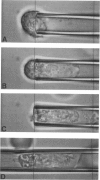Abstract
There have been very few studies which have measured the physical forces generated by cells during active movements. A special micropipette system has been designed to make it possible to observe cell motion within the pipette and to apply a pressure to counter the chemotactic migration of the cell. This provides a direct measure of the locomotion force generated by the cell. The average velocity of forward motion is 0.33 microns/s in the absence of counter-pressure. The application of a positive counter-pressure (C-P) causes a decrease in the velocity of the forward motion of the cell. At 17 cm H2O of C-P, the cell velocity drops to zero and even moves backward with a higher C-P. The results show that the decrement of velocity is linearly related to the magnitude of the C-P with a complete stoppage at a pressure of 17 cm H2O which corresponds to a force of 0.003 dyn. The maximum work rate of the cell is approximately 2.5 x 10(-8) erg/s.
Full text
PDF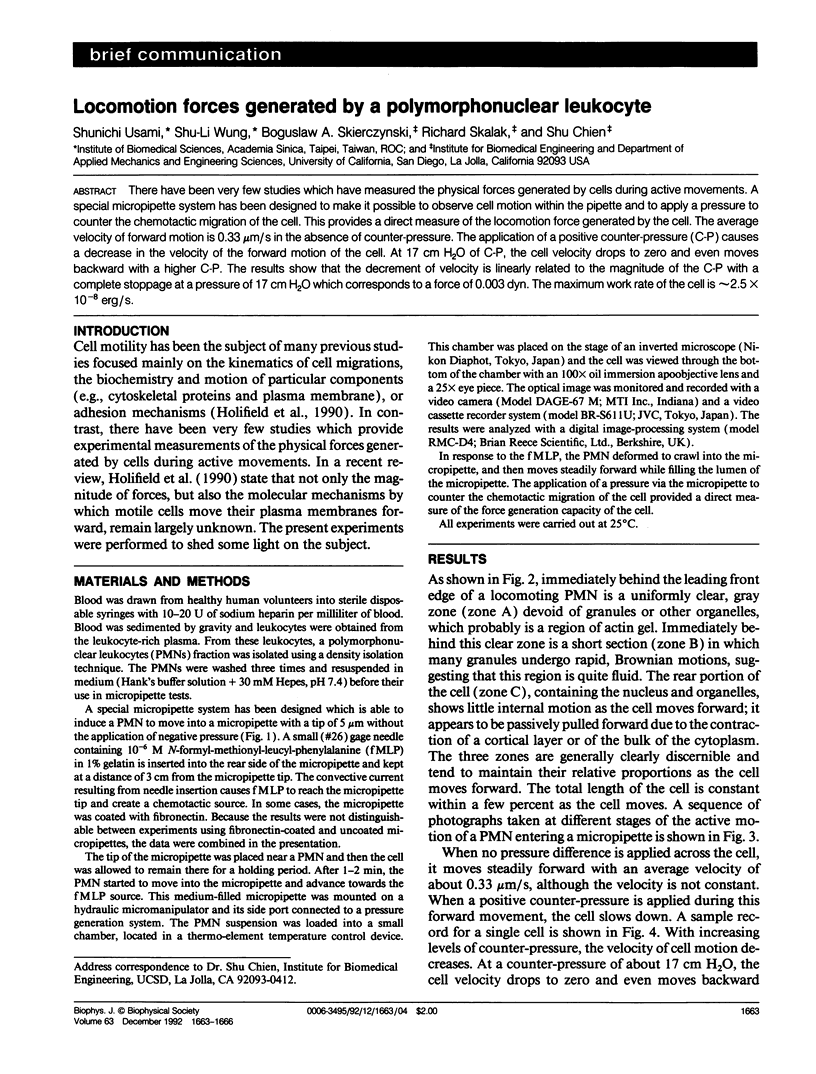
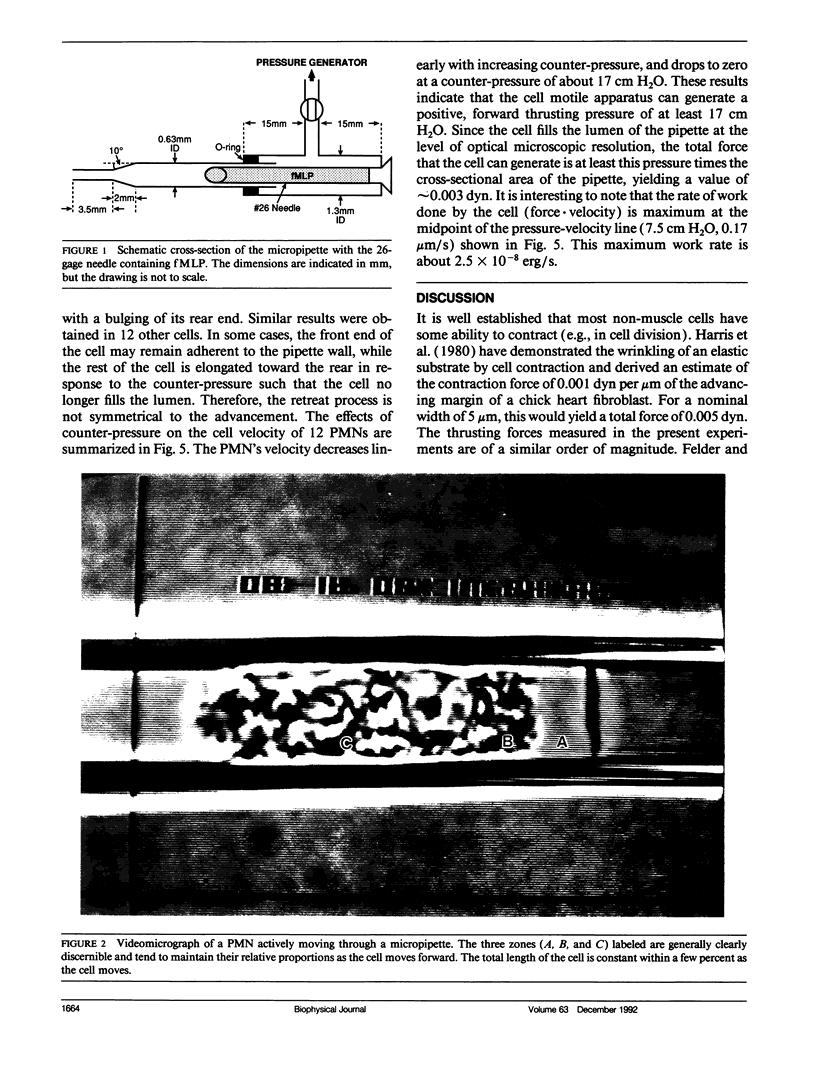
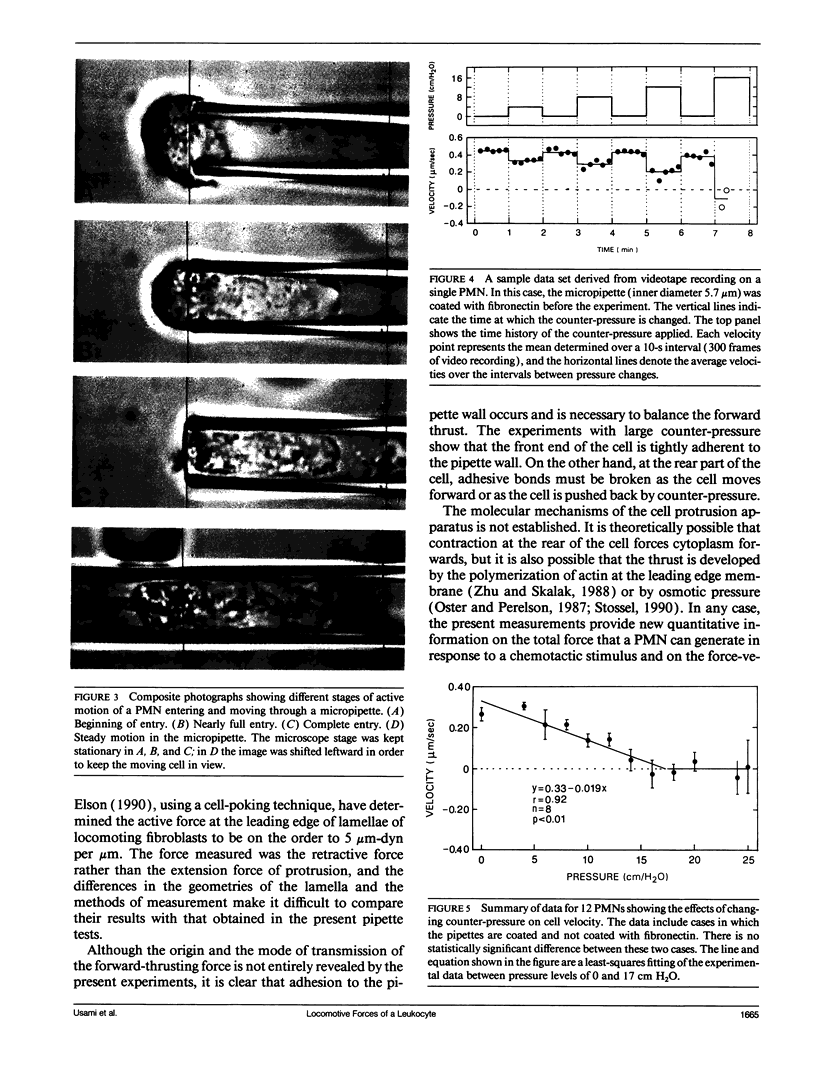
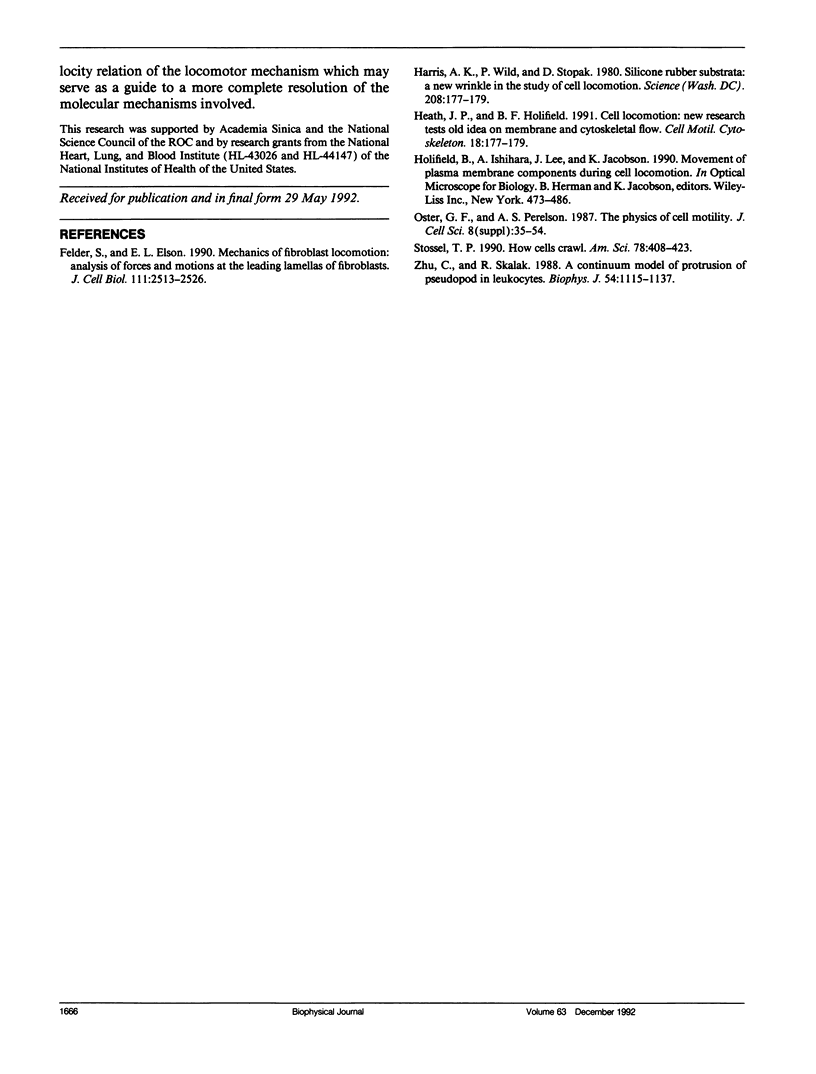
Images in this article
Selected References
These references are in PubMed. This may not be the complete list of references from this article.
- Felder S., Elson E. L. Mechanics of fibroblast locomotion: quantitative analysis of forces and motions at the leading lamellas of fibroblasts. J Cell Biol. 1990 Dec;111(6 Pt 1):2513–2526. doi: 10.1083/jcb.111.6.2513. [DOI] [PMC free article] [PubMed] [Google Scholar]
- Harris A. K., Wild P., Stopak D. Silicone rubber substrata: a new wrinkle in the study of cell locomotion. Science. 1980 Apr 11;208(4440):177–179. doi: 10.1126/science.6987736. [DOI] [PubMed] [Google Scholar]
- Oster G. F., Perelson A. S. The physics of cell motility. J Cell Sci Suppl. 1987;8:35–54. doi: 10.1242/jcs.1987.supplement_8.3. [DOI] [PubMed] [Google Scholar]
- Zhu C., Skalak R. A continuum model of protrusion of pseudopod in leukocytes. Biophys J. 1988 Dec;54(6):1115–1137. doi: 10.1016/S0006-3495(88)83047-9. [DOI] [PMC free article] [PubMed] [Google Scholar]




